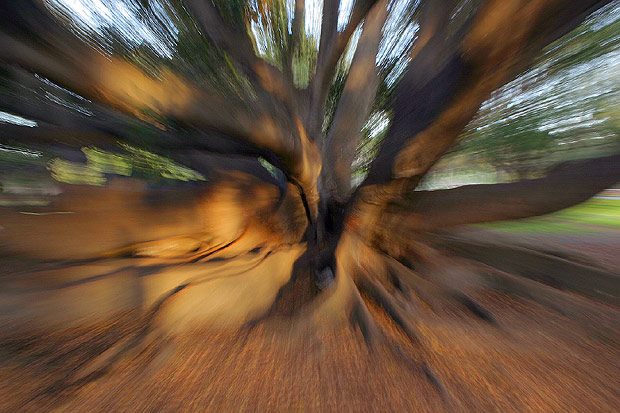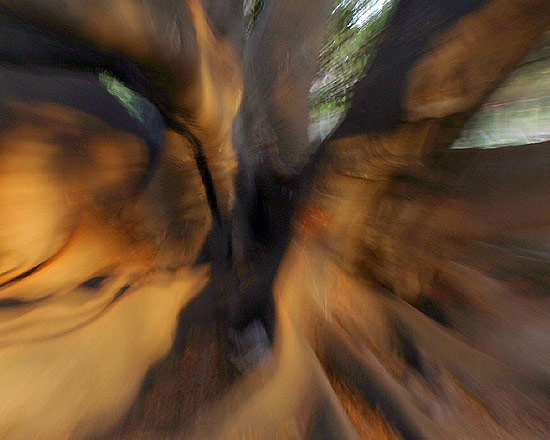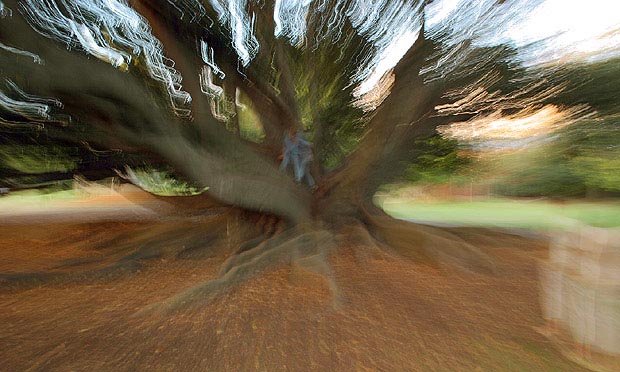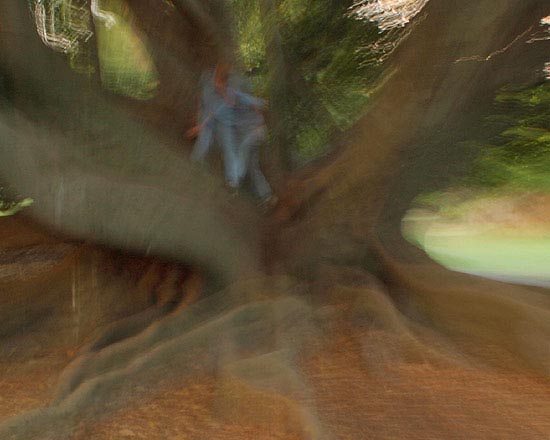3072 pixels (w) x 2048 pixels (h), digital photograph.
Date produced: 16th April 2006, at 17:20.
About Long Exposure photography: This is a form of photography that developed for me during this project. These ’long exposure photographs’ basically result from using long exposure times, that let in a stream of sharply focused light -resulting in at least partly blurred images. These (often dynamic) images result from the impact of the camera movement through 3-dimensional light and space. They have been ‘painted’ with light and movement and time through space (certainly more than conventional photography from a static viewpoint). Many shapes and details are simplified. I have found that major three dimensional structures can still somehow be recorded by the way they interact with the movement. One is presented with an ‘impression’, formed from the recording of relationships of shapes, tones and colours from a real experience. There are basically three types of long exposure photographs I explored: The simplest was to just move the camera within the exposure time. I experimented with the effects of various movements in relation to the things being photographed: sometimes moving the camera towards the subjects, or perhaps following an imaginary line of flow. Sometimes the movements were quick and wild, sometimes the movements were more subtle. It certainly helped by using a digital camera, which can show the resulting photograph almost instantly. The second type of photograph came about by manipulating the lens zoom ring during the exposures. These images tend to draw focus towards the centre of the photographs. Again, plenty of experimenting took place to look at the effects of slowly rotating the camera lens, or slowly changing the focus point, while manipulating the zoom ring. The example shown above is an example of this second form of long exposure photograph.
The third type use a burst of flash at the start of the exposure. As mentioned earlier, I used a digital camera for taking these photographs - A Canon EOS 300D SLR. Being able to check results instantly was crucial for this type of photography. I could try a particular ‘shot’ many times, learn from the results I was getting, and discard the photographs that clearly didn’t work.
The vast majority of the photographs I attempted were taken using a sensitivity setting of ISO 100, my camera’s slowest setting. Typical exposure times were around 1 second, though I used a range from about 1/4 sec to 4 seconds. I usually closed the aperture down to about f-22 to reduce the amount of light entering the lens. I also used a neutral density filter to reduce the amount of light further, if I needed to use longer exposure times. I found that taking long exposure photographs at around sunset to be quite useful, because of the dimmer light, and stronger colours.
Using this form of photography came about as a result of wanting to use a freer approach to taking photographs at the tree. Under the tree’s canopy, the light is quite dark. To get a reasonable depth of field in a ‘normal’ photograph, the exposure times required a tripod for getting a still image. This need to use a tripod meant that lengthy setting up over uneven surfaces was required, when I found a view I wanted to capture. Because the exposure times were lengthy, any breeze would make the foliage blurry. After waiting for still conditions over quite a long time during one session to get just a few photographs, I felt like just shooting off a whole lot of really quick and silly photos. This led to seeing some interesting results, and looking into a whole new type of photography for me.
Included below the detail for this image, is another example of long exposure photography.
| 





